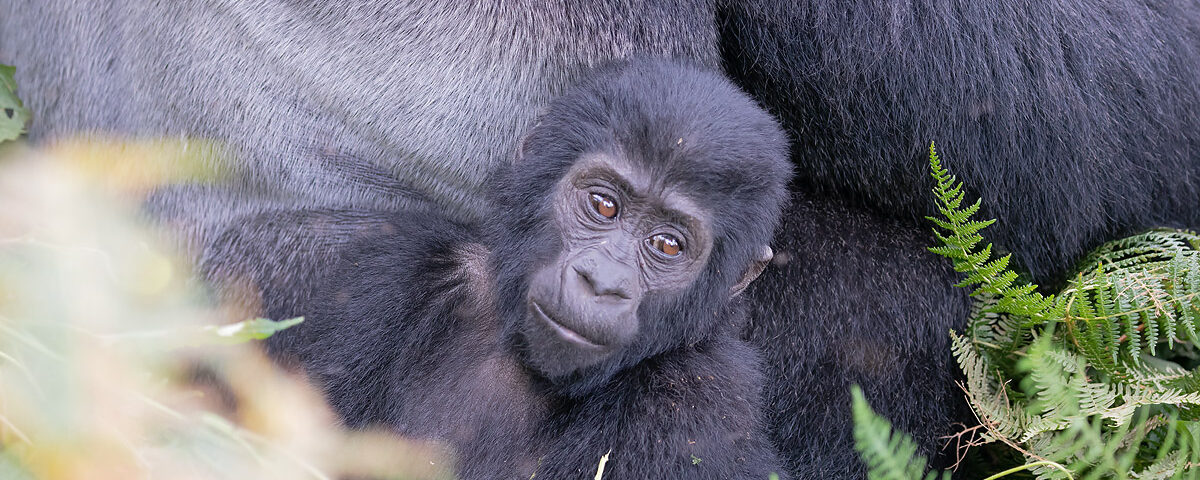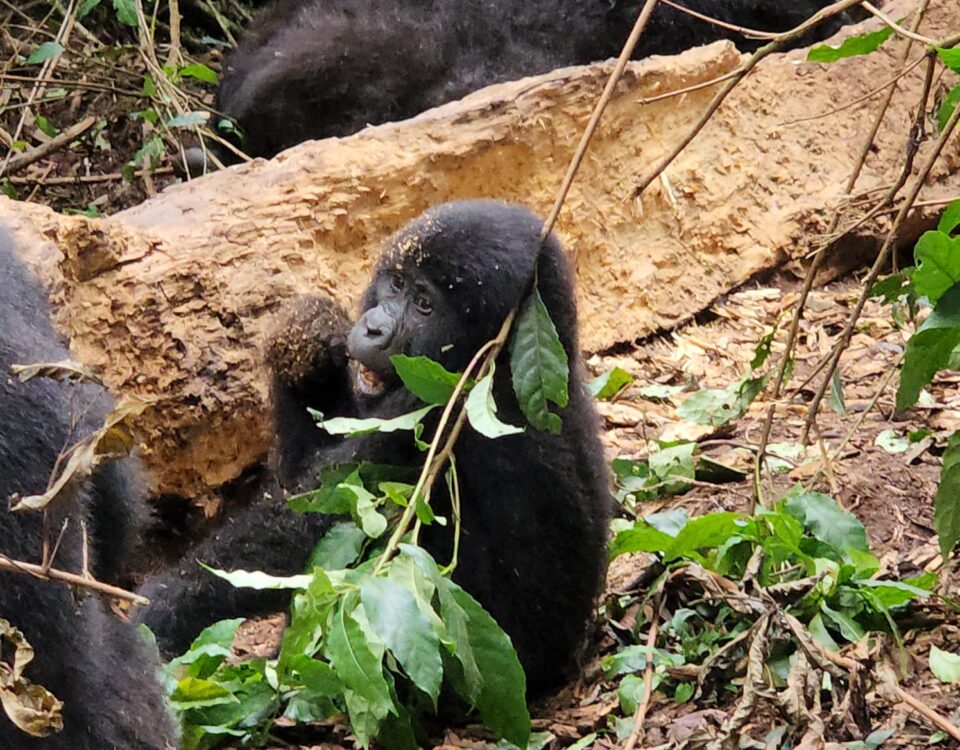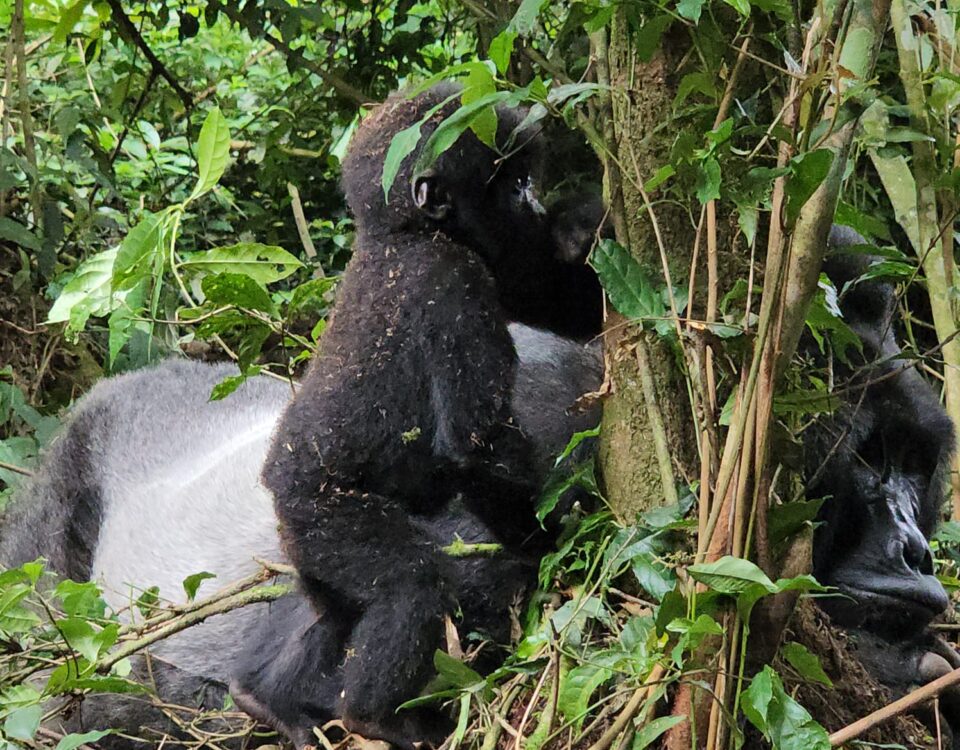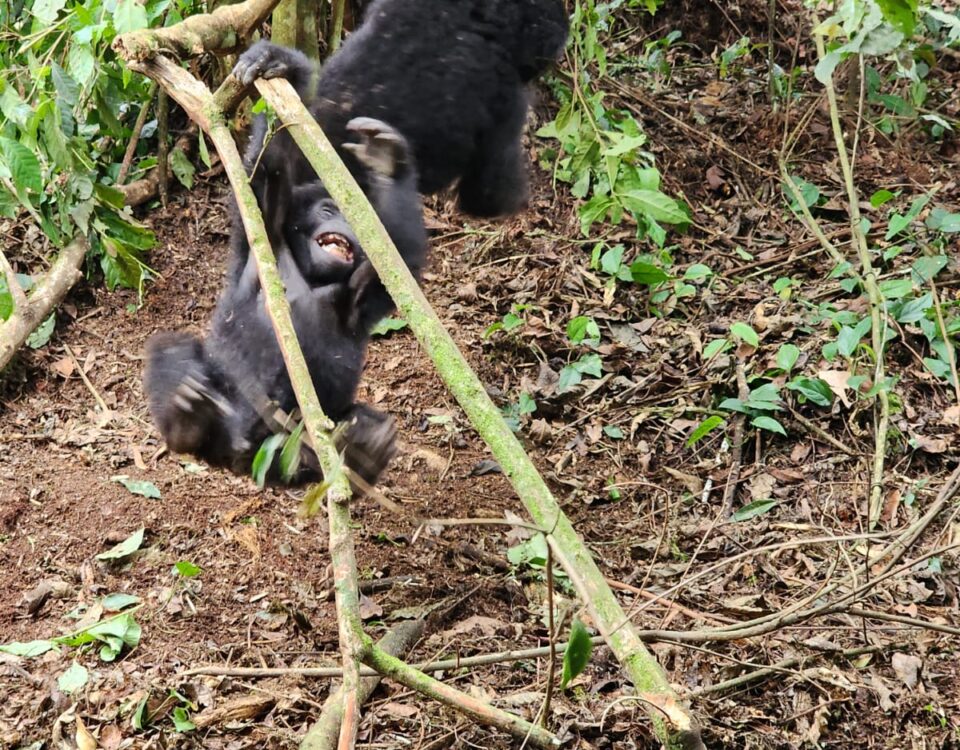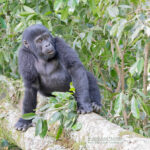
How Many Gorillas Are There in Rwanda?
April 1, 2025
What is the Significance of Gorilla Trekking in Rwanda?
April 1, 2025Can I See Baby Gorillas During the Trek?
Can I See Baby Gorillas During the Trek? One of the most exciting aspects of gorilla trekking is the possibility of seeing baby gorillas in their natural habitat. These adorable, young gorillas are not only a joy to witness but also play an important role in the family dynamics of the gorilla groups in Rwanda’s Volcanoes National Park. Their playful nature, innocent curiosity, and close bonds with their mothers make them particularly fascinating to observe. For many trekkers, encountering a baby gorilla is the highlight of their experience.
If you’re wondering whether you can see baby gorillas during your trek, the answer is generally yes. However, the chance to see a baby gorilla depends on several factors, such as the specific family you visit, the time of year, and the overall behavior of the gorillas. In this article, we’ll explore what it’s like to see baby gorillas, factors that influence your chances, and why these young gorillas are so captivating to watch.
Best Uganda Rwanda Safari Packages
Understanding Gorilla Family Structure and Babies
Mountain gorillas, like humans, live in tight-knit family groups led by a dominant silverback gorilla. These family units consist of several adults, juvenile gorillas, and babies. The role of the mother gorilla is especially important when it comes to baby gorillas. Newborn gorillas rely on their mothers for everything — from feeding to protection and socialization.
Baby gorillas are born after a gestation period of about 8.5 months. Once born, they are completely dependent on their mothers, clinging to them for support and nourishment. Over time, they begin to explore their surroundings, often in the company of their mothers and other members of the family. They are playful, curious, and learn many of their social behaviors from watching the adults in the group.
Unlike human babies, who stay relatively stationary for much of their early months, gorilla babies are already quite active at a young age. They start walking at around 6 months old and begin climbing trees and playing with other juveniles in the group. Baby gorillas spend a significant amount of time playing, exploring, and interacting with other members of the family, including their siblings and even adult members, like their fathers.
Can I See Baby Gorillas During My Trek?
The answer depends on a few factors. Yes, it is possible to see baby gorillas during a trek in Rwanda, but not every trek guarantees an encounter with a baby. Here are some key points to keep in mind when it comes to encountering these young gorillas:
- The Family You Visit
Some gorilla families are more likely to have infants than others, which can influence your chances of seeing baby gorillas. Families with recent births, or those that are known to have larger numbers of young members, may offer better opportunities to spot the babies. For instance, the Susa Family is one of the largest and most studied groups, and it has been known to have infants in the group in recent years. On the other hand, families like Amahoro and Kwitonda have been documented with more adolescent gorillas, but the presence of babies can vary. - Seasonal Factors
While mountain gorillas can be found in Rwanda year-round, the likelihood of seeing baby gorillas can be influenced by the season. Gorilla babies are typically born throughout the year, but births tend to peak in certain months. The rainy season, from March to May and October to November, can sometimes see an increase in births as the gorillas are more likely to stay within their usual ranges due to abundant food supplies. This could mean more infant gorillas within the groups during this time. - The Trekking Experience
The terrain and environment you traverse during your trek will also affect your chances of seeing baby gorillas. Mountain gorillas live in the dense vegetation of the Volcanoes National Park, so spotting them—especially infants—depends largely on the location of the family at the time of your trek. Some groups may be found in dense forests, where baby gorillas are more likely to stay close to their mothers and siblings. Others may be in more open areas, where the babies are more active and visible. - Family Behavior
Gorilla families exhibit different social dynamics, and baby gorillas tend to stay close to their mothers, especially when they are very young. If you are fortunate enough to track a group that has a younger baby, you might witness it being carried by the mother or playing near the group. However, some families may have older babies or juveniles that are more independent, making it a little more challenging to spot the infants.
What Is It Like to See a Baby Gorilla During the Trek?
If you’re lucky enough to see a baby gorilla during your trek, it can be a magical experience. Baby gorillas, much like human babies, are highly expressive and curious about the world around them. They are often seen clinging to their mothers, climbing trees, or engaging in playful interactions with other young gorillas. Seeing these interactions in the wild is incredibly rare and provides insight into the early stages of gorilla development.
Gorilla babies are also very playful and can often be seen chasing one another, exploring their environment, or imitating the adults. Watching a baby gorilla interact with its family can be both entertaining and heartwarming, as they display behaviors that are similar to those of human children, like clapping, laughing, or even making faces at each other.
Baby gorillas are not just adorable, but they are also an important part of the family dynamic. They rely heavily on adult members of the group for survival, learning social behaviors, and understanding their place in the troop. When trekkers see these babies, it reminds them of the importance of conservation efforts to ensure that these young gorillas have a future in the wild.
Why Is It Important to See Baby Gorillas?
For many trekkers, the opportunity to see baby gorillas is one of the main reasons they visit Rwanda. However, this experience goes beyond just personal enjoyment. Watching a baby gorilla and its family is a reminder of the delicate balance of the gorillas’ ecosystem and the importance of conservation efforts.
By participating in a gorilla trek, visitors contribute directly to the conservation efforts that protect both adult and baby gorillas. The funds raised through gorilla trekking permits help finance anti-poaching patrols, habitat protection, and research projects. The continued survival of gorillas, including their babies, is reliant on the support of sustainable tourism.
Furthermore, the sight of a baby gorilla often reinforces the emotional connection visitors have with the species, inspiring them to support conservation initiatives and encourage others to do the same. Seeing these babies in their natural environment instills a sense of responsibility toward protecting not just mountain gorillas, but also other endangered species around the world.
What to Keep in Mind When Trekking to See Baby Gorillas
While seeing a baby gorilla is undoubtedly a unique and magical experience, it’s essential to follow specific guidelines when trekking in Volcanoes National Park to ensure that both the gorillas and visitors are safe.
- Maintain a Safe Distance
Trekkers must always maintain a distance of at least 7 meters (21 feet) from the gorillas, including the babies. This ensures that the gorillas remain comfortable and undisturbed while also protecting humans from any potential disease transmission. - Follow Your Guide’s Instructions
Experienced and knowledgeable guides lead every gorilla trek. They are trained to understand gorilla behavior and ensure that trekkers observe the animals without disturbing their natural activities. Always follow their instructions closely to avoid any accidents or disruptions. - Respect the Gorillas’ Space
While it is tempting to try and get closer for a better view, it’s crucial to respect the gorillas’ space and allow them to go about their activities naturally. Disturbing a mother and baby could cause unnecessary stress, which may lead to negative consequences for the animals.
Conclusion: The Joy of Seeing Baby Gorillas
Seeing baby gorillas during a trek in Rwanda is a truly unforgettable experience that offers a glimpse into the early lives of these endangered creatures. Although the chance to see a baby gorilla is not guaranteed, those who are fortunate enough to witness this rare sight will cherish the memory forever. The playful interactions, the innocence of the babies, and the strong family bonds make these moments incredibly special.
The best part is that every gorilla trek in Rwanda contributes to the conservation of the species, helping to ensure that future generations of baby gorillas will have a safe and protected home. With responsible tourism practices, you can not only enjoy the beauty of these amazing animals but also help protect them for years to come.

